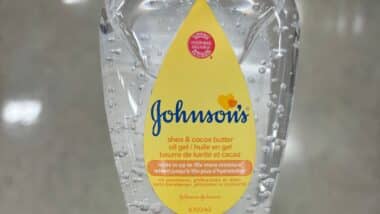
For several decades, professional firefighters, military members, and airport workers were under the impression that their exposure to PFOS PFOA substances was harmless.
Evidence in the form of internal documents of industrial manufacturer 3M shows both PFOS (perfluorooctanesulfonic acid) and PFAS (per- and polyfluoroalkyl substances) were known to be dangerous chemicals for at least 40 years, according to reporting by the activist group Environmental Working Group.
In the 1970s, Minnesota chemical giant 3M conducted research that proved the chemicals accumulated in the blood of exposed humans, according to The Intercept. Not long after verifying this chemical accumulation, 3M allegedly also determined the chemical compounds were toxic to the immune system.
What Are PFOS and PFOA?
According to the U.S. Environmental Protection Agency, both PFOS and PFOA are manmade chemicals, and both are fluorinated compounds that repel oil and water. They are known to accumulate in the biological systems of humans and wildlife. Both PFOS and PFOA are known groundwater contaminants that are absorbed quickly after oral exposure.
PFOS PFOA toxic chemicals are considered “forever chemicals” because of their inability to break down in the environment. One of the first commercially used products that used PFOS was 3M’s Scotchgard stain repellant that was often sprayed on furniture, shoes, carpets and clothing to repel wet substances.
Both PFOS and PFOA were integral components of Teflon coatings, too. The substances, along with other chemicals in the fluoropolymer family, have been used to protect cookware and other daily use products from heat and corrosion. Although no longer used to coat cookware in the U.S., imported cookware may be coated with the toxic chemicals.
Some have turned to litigation over PFOS and PFOA contaminants. The National Rural Water Association filed a class action lawsuit against firefighting foam manufacturers, accusing them of contaminating groundwater with carcinogenic substances. Companies such as DuPont and ExxonMobil have agreed to multi-million dollar settlements to resolve claims of groundwater contamination.
Harms of PFOS PFOA
The toxic chemicals most often accumulate in the blood serum, kidneys, and liver, but toxicological research has found potential developmental, reproductive, and systemic effects in animals, according to the EPA.
The acknowledgment of health effects related to PFOS contamination is not as well-documented as that of other toxins because the realization that the chemicals can cause harm is relatively new.

People who have been exposed to high levels of PFOA and PFOS may experience a number of serious health complications as a result of their exposure, such as dysfunctional thyroids, osteoarthritis, delayed puberty, increased cholesterol, or immune system problems. Increased levels of uric acid also have been noted among people exposed to unusual amounts of PFOS. An abundance of uric acid is linked to the development of gout, a type of arthritis that is the result of uric acid crystals collecting in the joints.
Other issues that are believed to be related to high exposure to PFOS PFOA contamination include:
- Abnormal fetal development
- Skeletal problems
- Cardiovascular issues
- Cancer of the testicles, kidneys, and thyroid
According to the World Health Organization’s (WHO) International Agency for Research on Cancer (IARC), PFOS is considered possibly carcinogenic to humans.
Critics worry that the government is not doing enough to protect the public from PFOS PFOA chemicals, despite knowledge of their possible dangers. The EPA did not take enough action to regulate the use of the two chemicals, according to columnist Kyla Bennett in an opinion piece in The Hill. Reportedly, the EPA has not created regulations on how the chemicals might be used, despite promises that steps would be taken to regulate the use of the chemicals.
In February 2019, the EPA issued a PFAS Action Plan that proposed specified contaminant levels for the presence of the chemicals in drinking water, and promised to propose a regulatory determination under the Safe Drinking Water Act by the end of the year. However, these plans did not come to fruition as stated, recounts Bennett.
The EPA has not put these regulations in place, Bennett says, but has instead merely proposed that regulations be considered, and is continuing to gather information on other PFAS chemicals. Now, any potential regulations would not be implemented for around five years, per the regulatory timeline the agency provided. This, Bennett argued, showed that the EPA “has no intention of protecting Americans from PFAS contamination as long as President Trump is in office.”
Allegedly, this lack of action is a marked contrast to the mounting scientific research that suggests PFOS and PFOA are indeed toxic and possibly carcinogenic.
To make matters worse, the EPA has reportedly approved new versions of the chemicals without testing their safety, says Bennett, despite the organization’s admission that more research should be done to determine their safety.
Bennett says that Democratic Senator Tom Carper from Delaware presented evidence indicating that the government intentionally implemented loopholes in regulation for the chemicals, that would allow products containing them to still come into the United States.
The lack of action on regulating PFAS may be set to change under the Biden administration.
President Joe Biden has pledged as part of his environmental justice plan to designate PFAS as hazardous substances, force a regulatory contamination limit for these substances in drinking water, incentivize companies to choose alternative substances, and push for more research into the chemicals.
Where Are They Used?
In addition to consumers’ exposure through using Scotchgard and potential groundwater contamination, firefighters have been exposed for years to PFOS and PFOA toxic chemicals because they are key ingredients in 3M’s aqueous film forming foam (AFFF) products.
How to Minimize the Potential Risks of PFOS PFOA
Up until 2018, the Federal Aviation Administration (FAA) allegedly required fires at airports to be fought using AFFF because the chemical suppresses fire by suffocating it. Many military bases reportedly still use AFFF to fight fires.
Consumers may be exposed to PFOS and PFOA through groundwater contamination, but the EPA has limited a margin of protection, saying drinking water should not contain more than 70 parts per trillion.
Avoiding non-stick cookware, non-stick coated food packaging and using organic cleaning products are ways to limit PFOS and PFOA exposure on an everyday basis.
If you or someone you love developed cancer after being exposed to firefighting foam, you may have a legal claim. Fill out the form on this page now to find out if you qualify to participate in a free firefighting foam lawsuit investigation.
ATTORNEY ADVERTISING
Top Class Actions is a Proud Member of the American Bar Association
LEGAL INFORMATION IS NOT LEGAL ADVICE
Top Class Actions Legal Statement
©2008 – 2026 Top Class Actions® LLC
Various Trademarks held by their respective owners
This website is not intended for viewing or usage by European Union citizens.
Get Help – It’s Free
Join a Free Firefighting Foam Cancer Class Action Lawsuit Investigation
If you qualify, an attorney will contact you to discuss the details of your potential case at no charge to you.
PLEASE NOTE: If you want to participate in this investigation, it is imperative that you reply to the law firm if they call or email you. Failing to do so may result in you not getting signed up as a client or getting you dropped as a client.
Oops! We could not locate your form.












